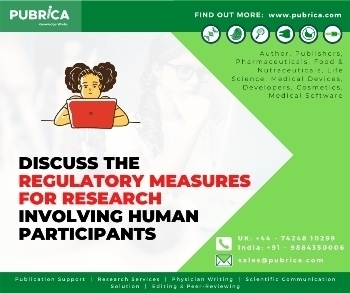
Dissertation topics covered in the molecular and cellular basics of cancer and development of target-specific therapeutics- Cancer/oncology
September 28, 2020
Discuss the regulatory measures for research involving human participants
September 30, 2020Brief
- The most plausible human endeavour happens in the healthcare sector, has the greatest impact on artificial intelligence. Artificial intelligence possesses superhuman performance in diagnosis, treatments, clinical testings, etc.
- AI will completely change the era of medicine by doctors, mainly in cardiology and radiology.
- Pubrica is conducting a meta-analysis in quantitative research about cardiovascular imaging to help future medical researchers and doctors.
Introduction
As years passing with growing technology, cardiac diagnostics have potential growth simultaneously. A huge population starts accepting imaging techniques for diagnosis and monitoring treatment in healthcare sectors that are faster and can be easily affordable. The interpretation of imaging is more accurate for satisfying patients. Writing a meta-analysis about cardiovascular imaging will be useful for future studies. Though cardiology has implanted many numbers of cases using AI, it is growing recently in the field of medicine. This blog brings out the diagnostic tools of cardiology using artificial intelligence.
A meta-analysis of cardiovascular imaging
- Echocardiography
- Computed tomography
- Cardiac MRI
- Nuclear imaging
- Future aspects
Echocardiography
Echocardiography, as the name, suggests it will diagnose by ultrasounds. The main uses of echocardiography are
- Ultrasounds are portable
- More standardized analysis
- The precise interpretation of data
- Speed
- Can be easily affordable
However, it is a user-dependent tool. AI has stepped to different echo cardiographic imaging chain. It has automated identification of left ventricles by having algorithms for congenital disorders and diseases. Some of the other important diagnosis is phenotypic heart failure and hypertrophic cardiomyopathy. In general, it will lead to new hypotheses and perform a better diagnosis and prognosis in different cardiac diseases.
Computer Tomography
Computer tomography in cardiovascular imaging has shown growth over the past 10 years. Some advantages of cardiac CT are
- Reduces noise
- Better image quality
- No need for invasive coronary angiography for diagnosing stenosis
The meta-analysis experts say that the cardiac CT worked by using an artificial neural network model which determine the level of calcium from coronary CT angiography. Another application of Cardiac CT is to process images. The visualization of images can be achieved by the machine learning process. Unlike echocardiography, Cardiac CT is user-independent and fast. The major significance is to reduce radiation exposure to the patients and helps to create personalized medicine.
Cardiac MRI
Imaging the heart from various parameters is done by cardiac Magnetic resonance imaging.
Functions
- Flow imaging
- Perfusion imaging
- Anatomical imaging
- Myocardial characterizations
- Contractions
The AI significance can be performed only by radiographers that have experience in physics and cardiac anatomy as they are an integral part of image analysis. However, the quality of the image is both user and vendor dependent.
The main objectives of cardiac MRI
- Automated segmentation of heart structure
- Infarct tissue analysis.
The studies carried out by Cardiac MRI are
- Component analysis in pulmonary hypertension for patients
- Worsening of left ventricular function for patients with a repaired tetralogy of Fallot
Due to these major disadvantages, MRI has become more challenging in imaging than others. Researchers are performing with various ideas to overcome those challenges.
Nuclear imaging
Nuclear imaging in cardiology is used to determine the faults in the myocardium wall.
Methods
- Myocardial perfusion single-photon emission computed tomography (spect)
- Positron emission tomography(pet)
- SPECT
SPECT detects the gamma rays emitted by the radioactive tracer to reconstruct the tissue. SPECT is used to diagnose the abnormal myocardium and it is interpreted using Artificial neural network models. The accuracy of data was boosted by machine learning.
It also detects
- Stress
- Stress-induced ischaemia
- Rest defects
- PET
PET detects the two concurrent opposite annihilation photos. Both spect and PET are similar to CT and MRI.
Disadvantages
It leads to radiation exposure in humans
Future aspects
There will be a huge opportunity for AI implementation in future research from machine learning sources.
- Biomarkers
- Genomics
- Proteomics
- Metabolomics
This can improve the healthcare standard and quality in the treatment of patients. The future researchers can work on the challenges of the imaging techniques using meta-analysis writing services
Conclusion
The cardiovascular imaging has shown remarkable growth over the past few years. It not only gives structural data but also physiological and molecular features of the heart. AI set up a huge platform to healthcare from past to present and even in future. Pubrica established a meta analysis of artificial intelligence in cardiovascular imaging.
References
- Siegersma, K. R., Leiner, T., Chew, D. P., Appelman, Y., Hofstra, L., &Verjans, J. W. (2019). Artificial intelligence in cardiovascular imaging: state of the art and implications for the imaging cardiologist. Netherlands Heart Journal, 1-11.
- Krittanawong, C., Zhang, H., Wang, Z., Aydar, M., &Kitai, T. (2017). Artificial intelligence in precision cardiovascular medicine. Journal of the American College of Cardiology, 69(21), 2657-2664.
- Dey, D., Slomka, P. J., Leeson, P., Comaniciu, D., Shrestha, S., Sengupta, P. P., & Marwick, T. H. (2019). Artificial intelligence in cardiovascular imaging: JACC state-of-the-art review. Journal of the American College of Cardiology, 73(11), 1317-1335.
- Johnson, K. W., Soto, J. T., Glicksberg, B. S., Shameer, K., Miotto, R., Ali, M., …& Dudley, J. T. (2018). Artificial intelligence in cardiology. Journal of the American College of Cardiology, 71(23), 2668-2679.



